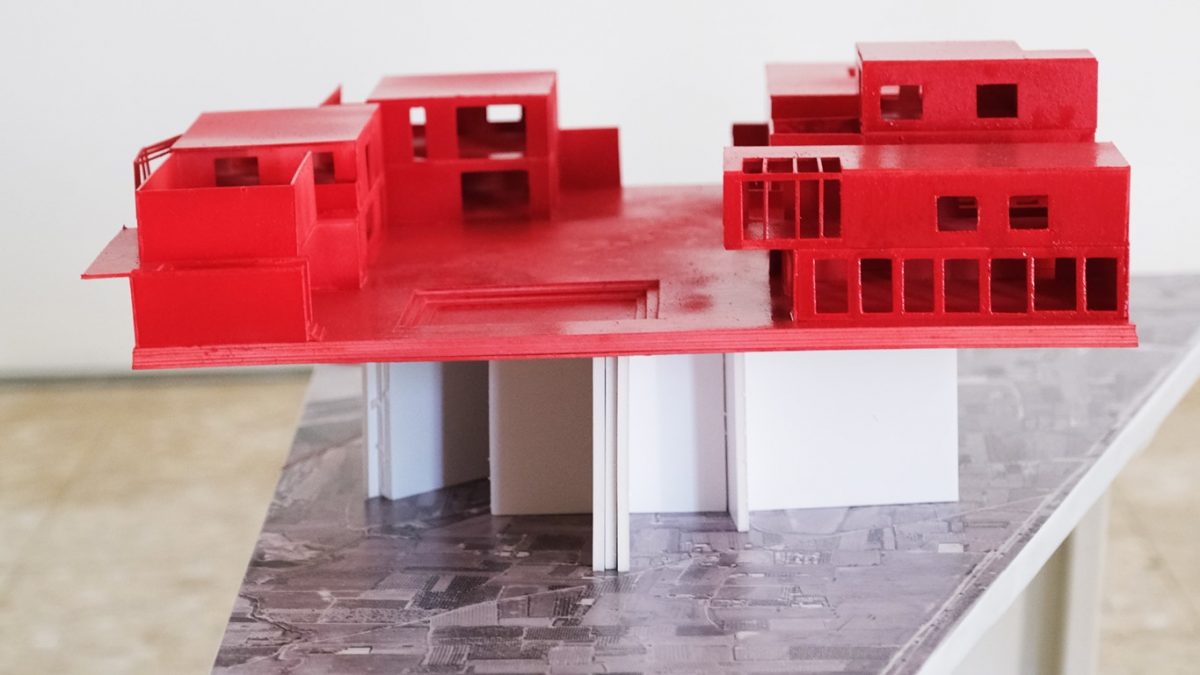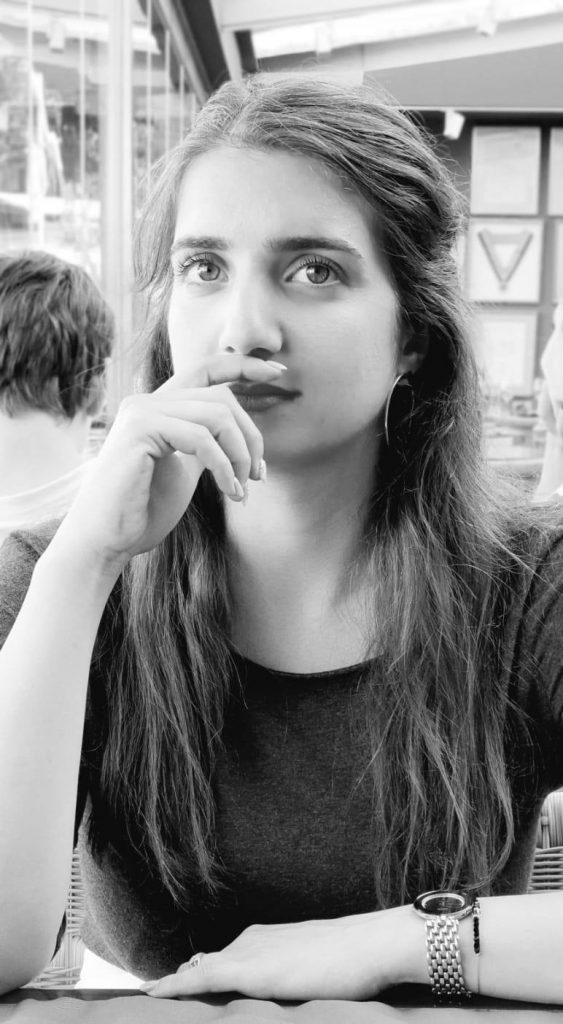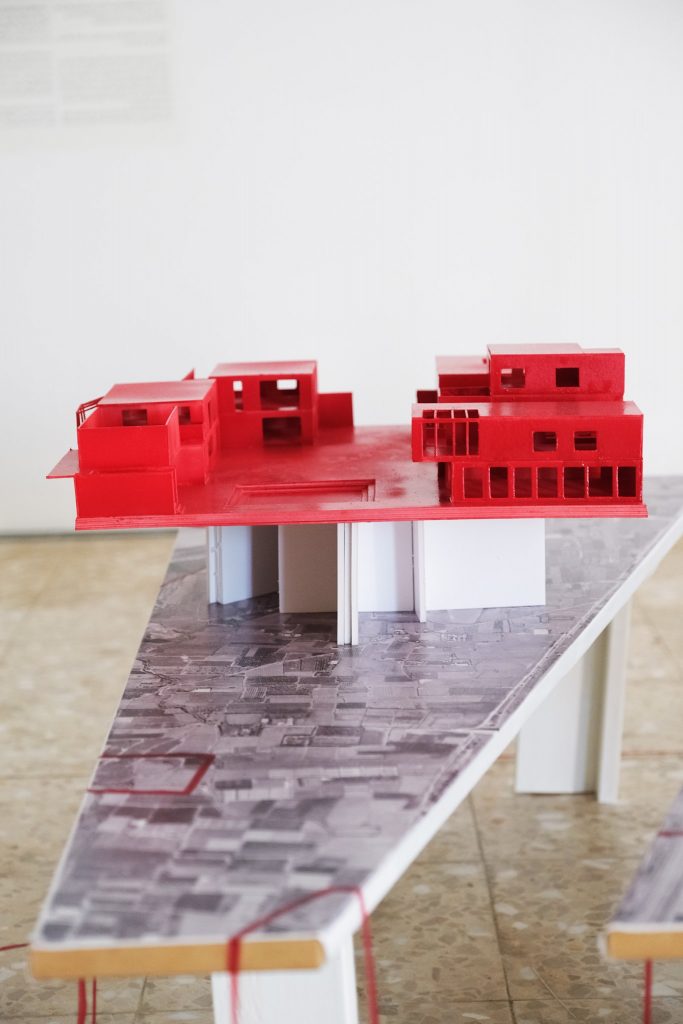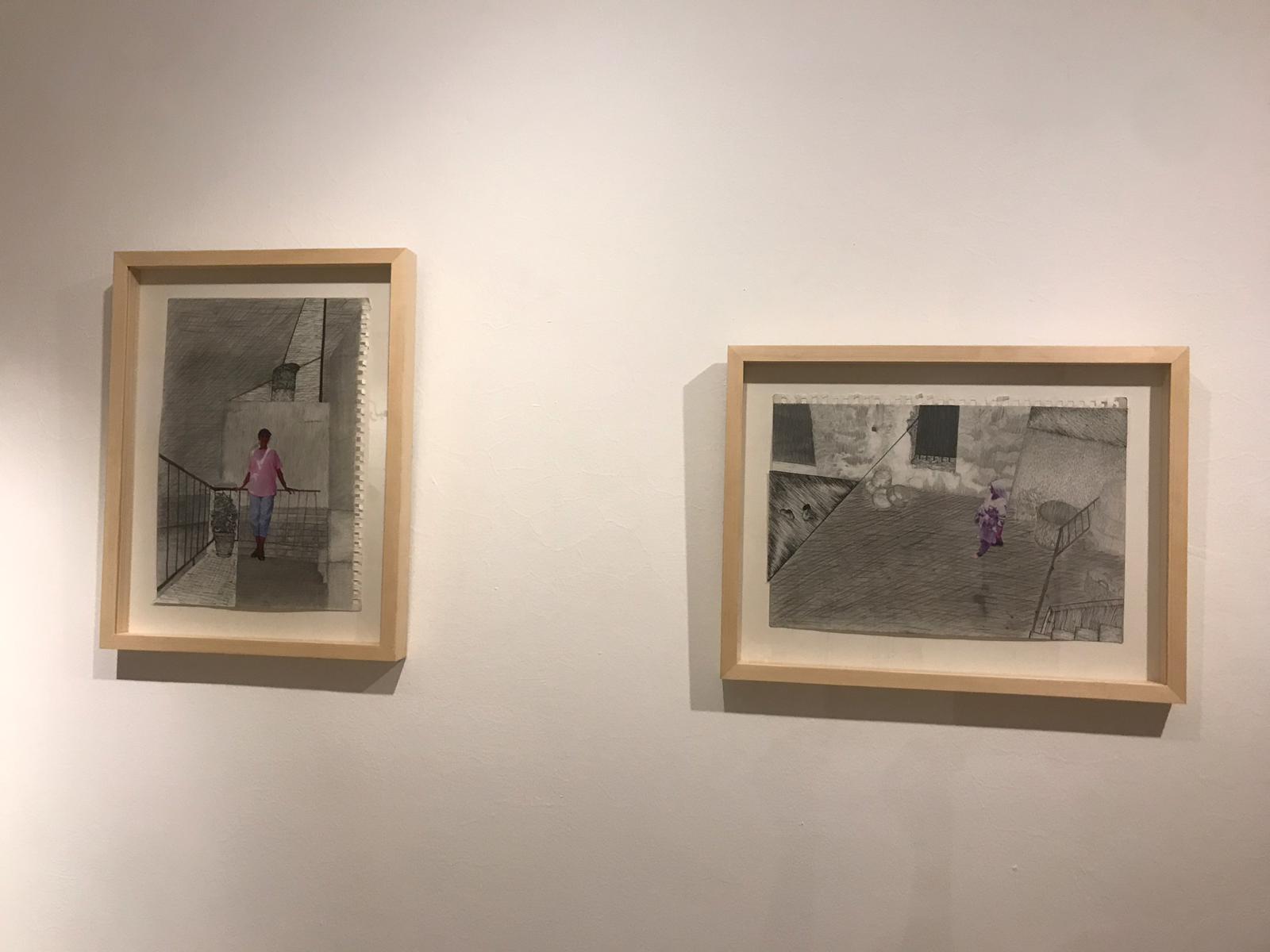
“Complex Spaces” Exhibition -Visual Illustations -Contrast-Shahd Massarwa
August 21, 2020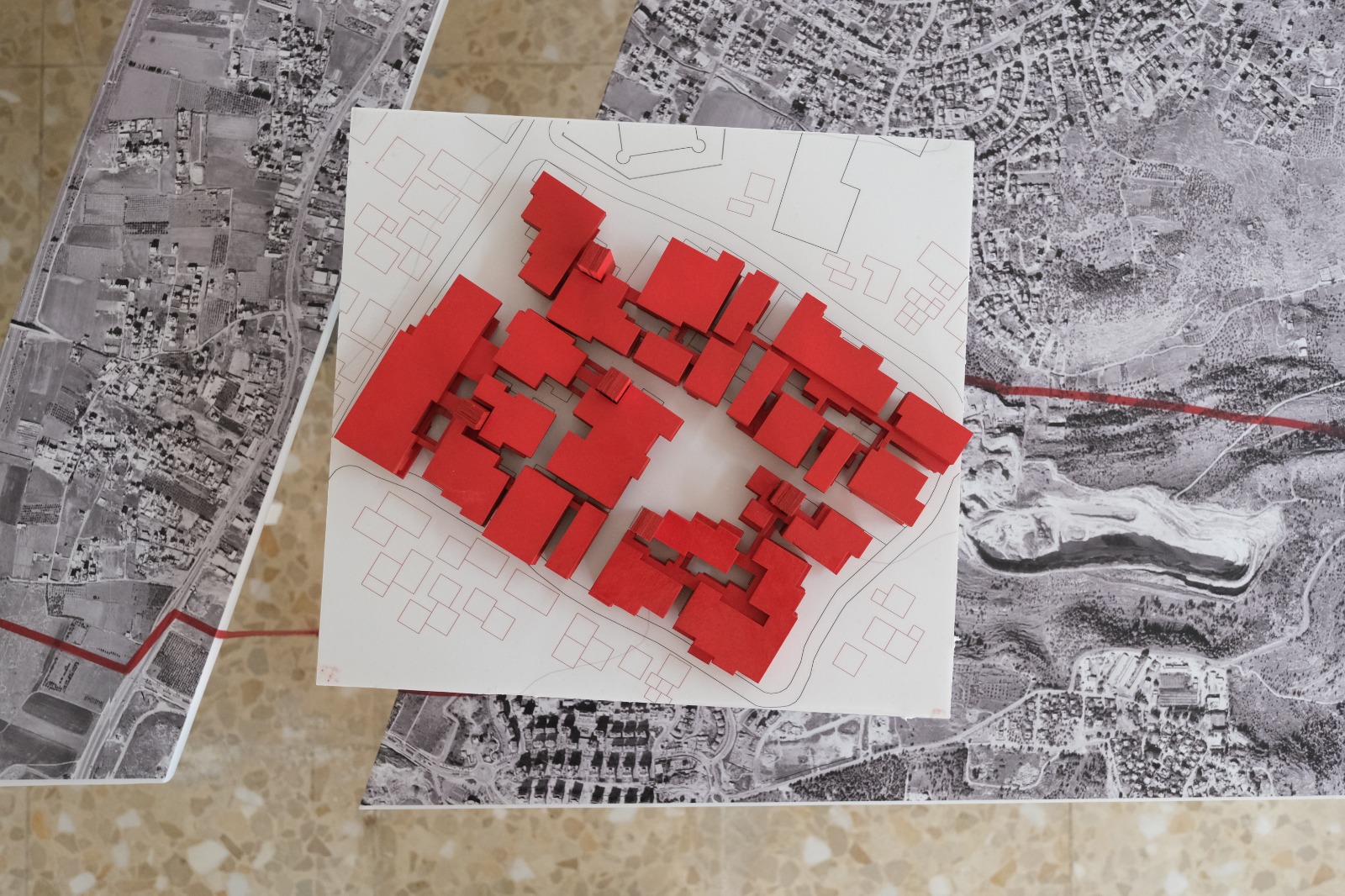
Complex Spaces Exhibition -Visual Illustrations- Dynamic Spaces By Muna Haj Yahya
August 21, 2020I search for the real Palestine inside me, with my stones, on the doorstep of my house and my yard, on the roof of my neighbors and the alleys of my neighborhood, with my grandmother’s chair and my father’s mantle. What is Palestine in my father’s eyes and how will it become in my son’s eye?”
The definition of today’s Arab communities as villages is not an accurate definition, and it is an exaggeration to name any of them a city. The distinctive feature of the emerging Palestinian Arab communities within the borders of Israel is a process of urbanization without a city, which transformed villages into ‘towns’. Unlike other similar processes of urbanization that are formed in different developed and developing countries, the Palestinian’s transition from an agricultural rural society to an industrial society in the Israeli landscape is marked by a rapid and disorganized expansion. The town’s development was made under the shadow of displacement and through an urbanization process that did not respect the village’s fabric and components, and interfered with this process. The expropriation of private and public lands, the loss of traditional social fabric and the emergence of modern life have all greatly affected the development and formation of the Arab-Palestinian community in Israel
The artwork ‘Rustic Leather, Civilian Mask’ examines these processes and tries to trace the changes that took place in them over three time axes: the Ottoman, the British and the Israeli rules over the land. The research focuses on the town of Taybeh and examines the basic building laws and principles of the original (traditional) environment, defines it anew, and proposes modern ways of planning the Arab-Palestinian city inside Israel.
The project seeks to reject the existing planning methods by planning and simulating a new neighborhood in western Taybeh, which depends on the ‘custom’ of forming the urban space.

